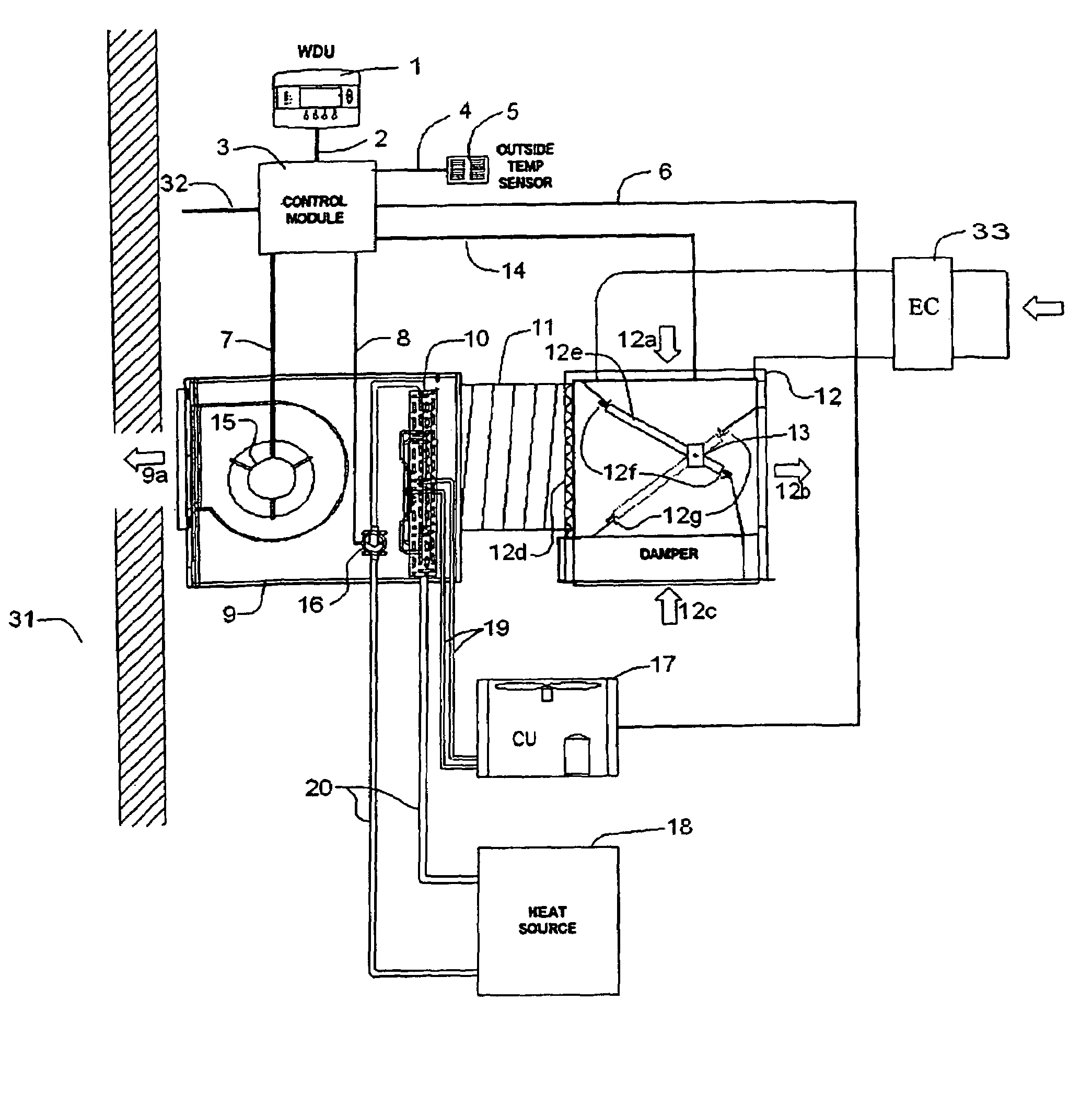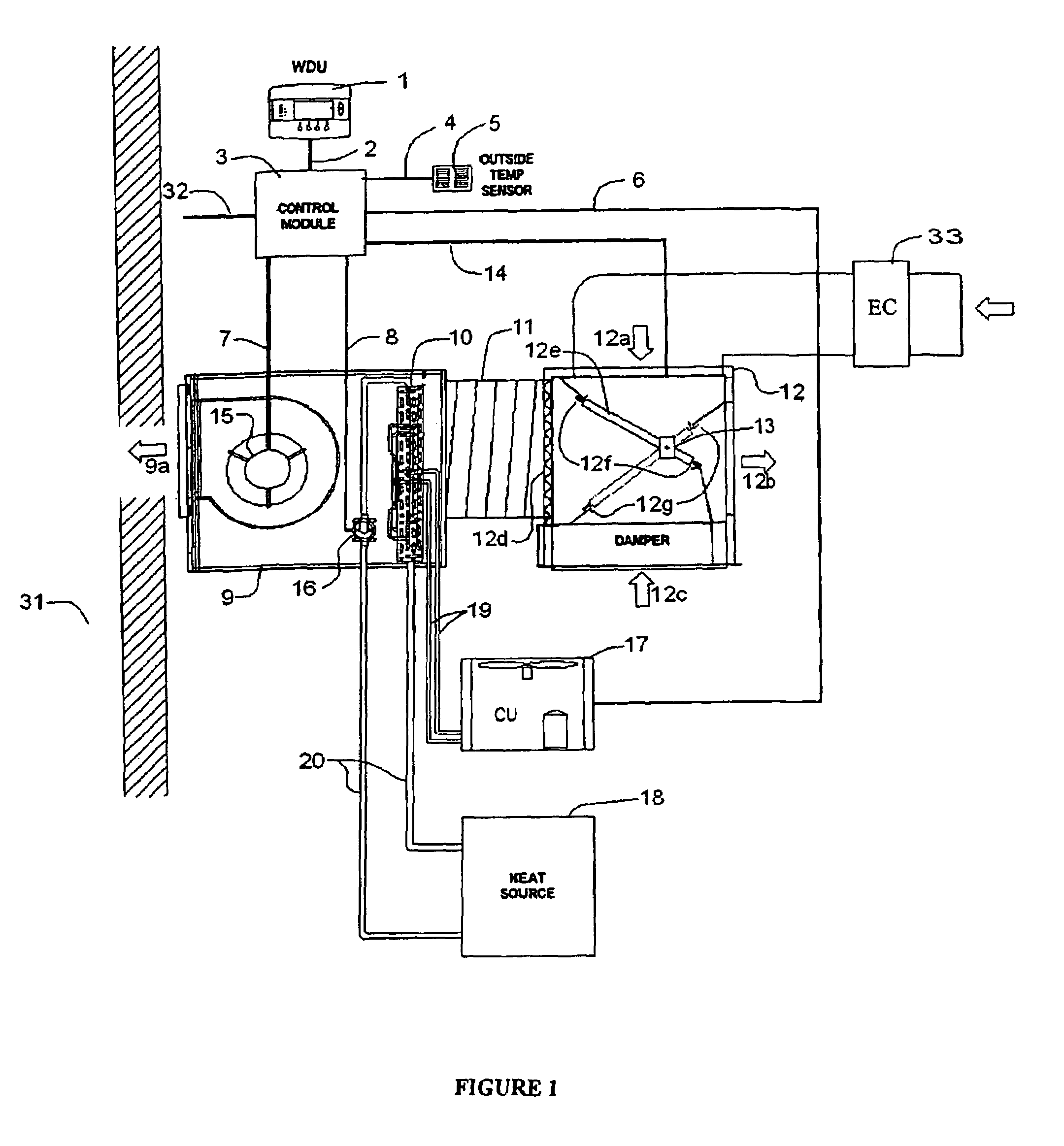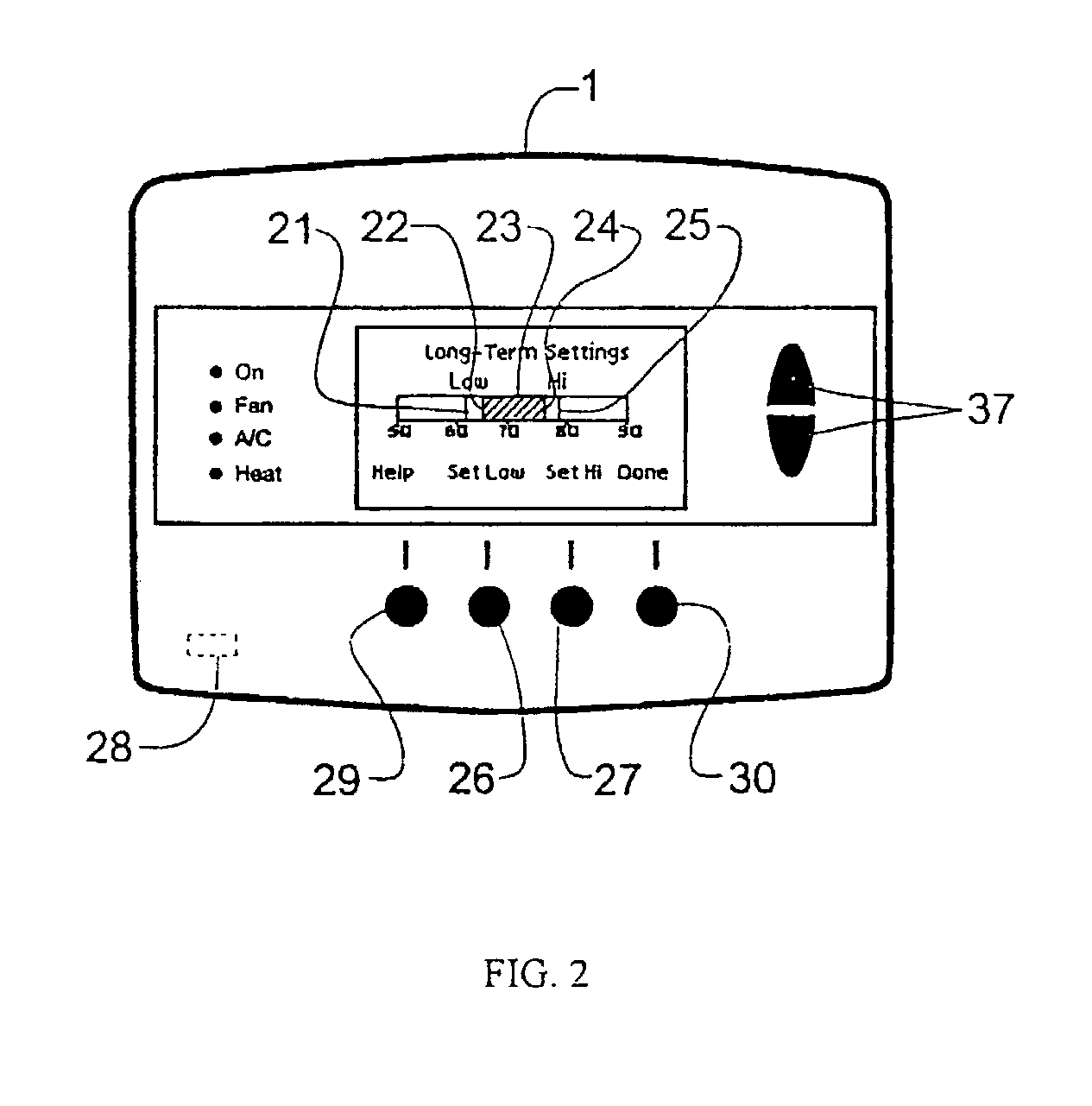Integrated ventilation cooling system
a ventilation cooling and integrated technology, applied in ventilation systems, heating types, instruments, etc., can solve the problems of compromising home security, affecting the comfort of users, and the relative simplicity of whole house fans is also a drawback, so as to improve the understanding of ventilation cooling concept, reduce energy use and peak electric demand, and improve the effect of temperature control and comfor
- Summary
- Abstract
- Description
- Claims
- Application Information
AI Technical Summary
Benefits of technology
Problems solved by technology
Method used
Image
Examples
Embodiment Construction
[0019]The present invention is an integrated comfort system that provides heating, ventilation cooling, air conditioning, and fresh air ventilation and is controlled using a single user interface. Components of said system include an air handler associated with a hot water heating coil or furnace, an outside air damper, a control, and an optional air conditioner evaporator and condensing unit.
[0020]A preferred embodiment of the invention is a control that regulates ventilation cooling by 1) measuring outdoor and indoor temperatures, 2) employing statistical equations programmed into the controller to predict outdoor and indoor temperatures from previously measured temperatures, and 3) applying predicted temperatures and user temperature settings to control the operation of the damper and fan motor. Said user temperature settings include minimum and maximum acceptable indoor temperatures, the former being the lowest indoor temperature at which outside air below such temperature will ...
PUM
 Login to View More
Login to View More Abstract
Description
Claims
Application Information
 Login to View More
Login to View More - R&D
- Intellectual Property
- Life Sciences
- Materials
- Tech Scout
- Unparalleled Data Quality
- Higher Quality Content
- 60% Fewer Hallucinations
Browse by: Latest US Patents, China's latest patents, Technical Efficacy Thesaurus, Application Domain, Technology Topic, Popular Technical Reports.
© 2025 PatSnap. All rights reserved.Legal|Privacy policy|Modern Slavery Act Transparency Statement|Sitemap|About US| Contact US: help@patsnap.com



